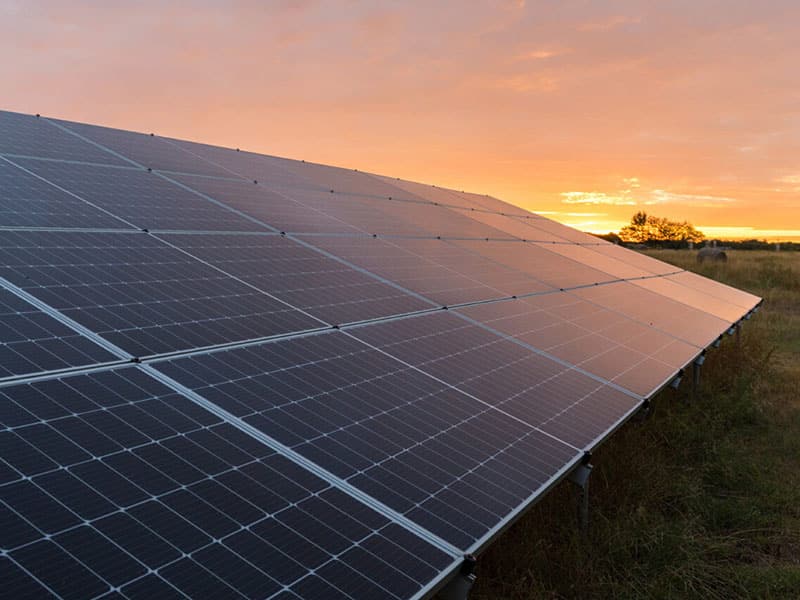As South Africans continue to face the burden of power challenges, the adoption of solar photovoltaic (PV) solutions has reached unprecedented levels. While the PV energy solution has emerged as a robust leading technology for commerce, industry, and manufacturing, the financial burdens imposed are significant, especially for Small to Medium Enterprise (SME) business owners. This has led to various innovative options emerging, promising access to clean energy.
Commercial and industrial businesses across the spectrum from SMEs to large corporates find it easier to justify funding these solutions, as they have become a necessity to trade, versus measures taken to contribute to climate matters or just convenience. The immediate arbitrage benefits that solar provides, battery costs dropping gradually, and its application to load shifting the overall backup solution, presents greater viability. Any business can benefit from these solutions however, for businesses spending copious amounts on fuel for generators because of load shedding, the adoption of these systems is an essential consideration. These solutions aid in solving for supply interruptions while providing partial insulation from tariff hikes.

One of the main incentives for business is that the payback period on capital investments has reduced steadily as energy tariffs have risen. Research shows that between 2007 and 2022, the Eskom tariff increased by 653%, effectively quadrupling the cost of power in 14 years. In April 2023, Eskom applied to the National Energy Regulator of South Africa (NERSA) for a 32% increase, indicating that this trend is not likely to change. This payback benefit has further been amplified by the recently passed amendment to the 12BA tax incentive, which allows businesses an accelerated wear-and-tear allowance on Solar PV investments of 125% in the first year.
Naturally, the need for financial solutions is a given requirement in this environment and the PV market has evolved rapidly. The current operating environment has seen financial institutions and solution providers offering various financing options. Standard Bank has been solutioning for this with cutting-edge Solar PV and battery finance solutions for the market through its Commercial Asset Finance division, for several years now. Opportunities to fund projects present themselves in numerous formats from clients who wish to own their own systems to Independent Power Producers (IPPs) who sell power.
Standard Bank has also recently provided digital platforms like PowerPulse for commercial and industrial clients, and LookSee for residential and SME clients. Using these tools, clients can source tailored and credible Solar PV and battery solutions. The journey entails a guided path to support clients in not falling into one of the many pitfalls that exist in the Solar PV market currently. It has proven to be a useful resource in shortening the client’s decision-making process through simplification.
Loading...
Against this outlook, the options for acquiring clean energy have increased. Each has its advantages and disadvantages but allows opportunities for the most suitable to be selected. In the list below, the solutions offered by outright purchase, solar loans or solar subscriptions would be the most obvious choice.
Options now open include:
1. Outright Purchase: Purchasing a solar installation outright allows complete ownership and control over the system. The benefits are long-term energy savings and even an opportunity to sell excess electricity back to the grid in areas where this is implemented. For smaller enterprises however, the capital outlay can be problematic and solutions for clients in this category are now available through collaboration with the government in the Bounce Back Energy Loan program which has been launched.
2. Power Purchase Agreements (PPAs): A popular choice among South Africans, PPAs involve energy companies installing and retaining ownership of the solar system. The purchaser then buys the generated electricity at a predetermined rate, often lower than prevailing utility rates. PPAs require minimal upfront costs, making solar energy more accessible to a wider range of users. Solution providers in this environment are focussed mainly on commercial and industrial (C&I) clients.
3. Solar Leasing: Involving an agreement with a solar company, solar leasing offers reduced electricity costs during the lease term without owning the system outright. Options for buying the solar assets at the end of the lease may be available.
With the ever-increasing gap between supply costs and earnings at Eskom, the need for alternative energy sources becomes even more critical. Solar installations offer a promising avenue for reducing the strain on the national utility, and widespread adoption of PV systems will play a pivotal role in driving this energy revolution.
As the solar industry matures, more flexible and imaginative financing options are emerging, making solar energy accessible to a broader spectrum of users. The future of renewable energy in South Africa is undoubtedly bright, and with continued innovative approaches, solar power will pave the way to a greener and more financially sustainable future for all.
Click here to learn more about Standard Bank’s Energy Bounce-Back Loan Scheme for businesses.
Loading...
